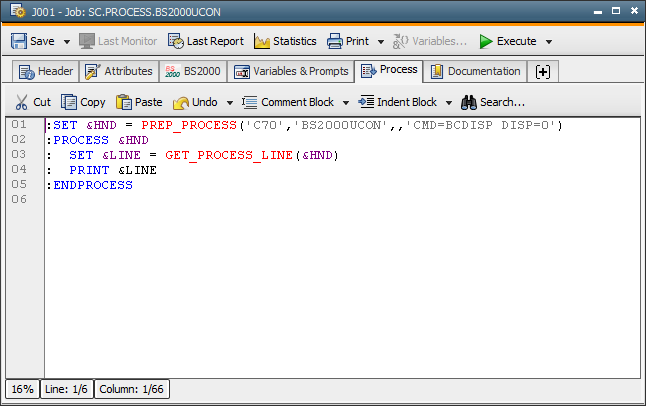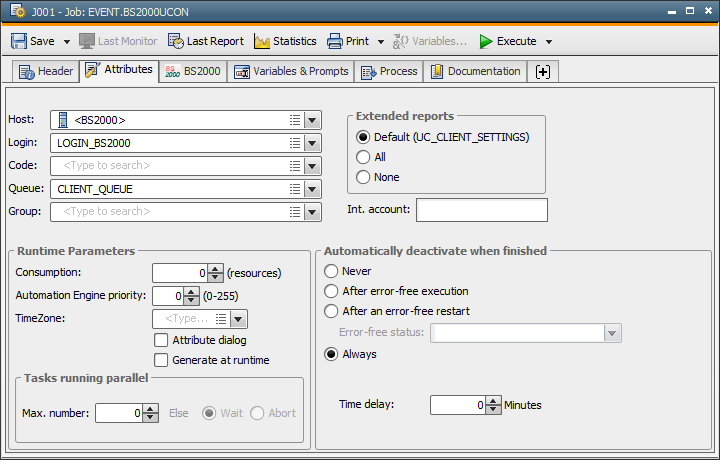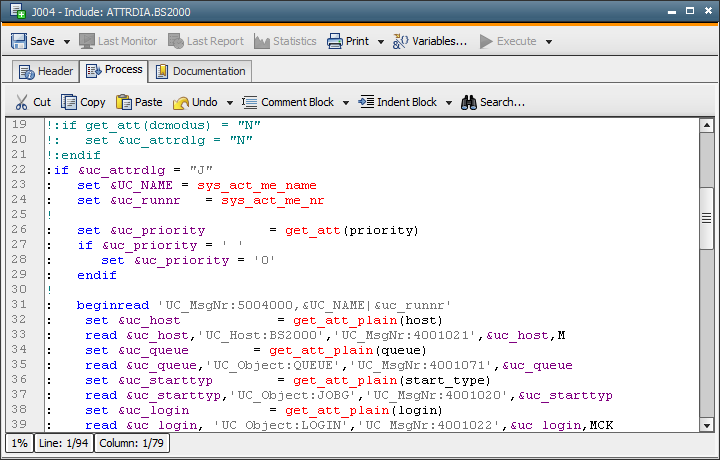
|
Agent - Freely Defined Port Numbers |

BS2000 |
BS2000 Operating System Command |

|
The creation, the forming up and the processing of a data sequence is a complex process whereby script functions and statements as well as special objects cooperate closely.
The following example shows the necessary definitions for the involved
objects and the corresponding script statements and their reference.
The example is kept small and clear to show the principles. It demonstrates
how a BS2000 Console Command is executed from a job and how the result
is written line-by-line to the job's activation report.
To execute a BS2000 Console Command the utility UCYEBXXZ must be installed on the host.

|
Job: SC.PROCESS.BS2000UCON |
|---|

The script of the job calls the function PREP_PROCESS which prepares the processing of the data sequence. The following parameters are passed:
The job EVENT.BS2000UCON will then be started.

|
Job: EVENT.BS2000UCON |
|---|

The job EVENT.BS2000UCON from client 0000 is supplied by default.
It is important that in its Attributes tab, the check box "Attribute dialog" is checked. That way the Include object ATTRDIA.BS2000 is read, which normally causes the start of the Attribute Dialog.

|
Include: ATTRDIA.BS2000 |
|---|

All attributes listed in the script of the Include can be supplied this way. The Attribute Dialog is not displayed because passing the variable contents is done internally.

|
Job: EVENT.BS2000UCON |
|---|

Now the job can log on and the console command can execute.
The outfile is transferred to the Automation Engine by using the file transfer and is then available as a data sequence. The execution of the job EVENT.BS2000UCON is completed.

|
Job: SC.PROCESS.BS2000UCON |
|---|

The function PREP_PROCESS returns a value which is a handle for information on the data sequence that will be processed.
This value is passed to the statement :PROCESS as a start parameter. :PROCESS and :ENDPROCESS then form a processing loop which, in this case, will be cycled until the end of the data sequence is reached. During each iteration, a new line of the data sequence is fetched from memory. The function GET_PROCESS_LINE can - by using the current value - retrieve the contents of the current line.
In the example, the current console line is written to the activation protocol.
The :STOP statement interrupts the execution and displays this activation report.